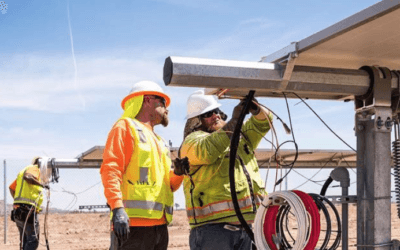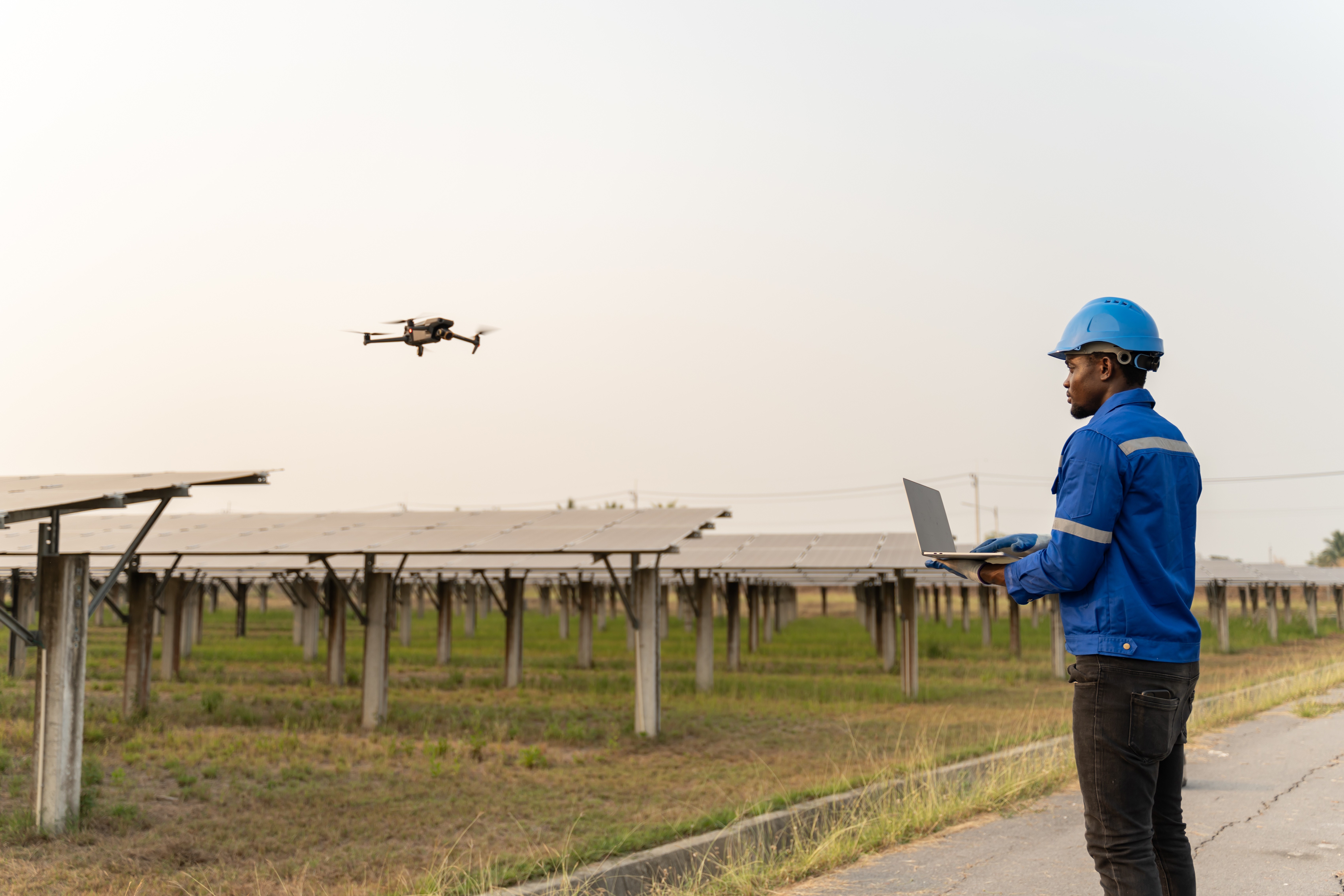Posted On 6/28/18

The renewable energy sector has seen a tremendous amount of growth over the last few years, and PV (solar) has shifted to the forefront of new clean energy development. In fact according to SEIA, Solar has ranked first or second in new electric capacity additions in each of the last 5 years.” As of 2017, nearly 56 GW of total solar capacity has now been installed in the US. Solar sites are being built at a never before seen pace and scale on rooftops, deserts, northern climates that see snow and below 0ºF temperatures, and other varying locations around the world where solar is a new energy source.
With the massive growth of solar projects in development and being completed around the world, there are several opportunities for solar companies and asset owners to replace traditional, labor-intensive tasks with drones. Drones can provide value across the cradle-to-grave lifespan of a solar asset, from initial planning/design to ongoing annual maintenance. Using drones within the commissioning of a new PV system is a quick and effective method to assess the quality and operational health of a new plant. In this post, we will cover the commissioning process of a solar project, the benefits of using drones during this stage, and how drones specifically are helping teams reduce time in the field and labor costs associated with PV system commissioning.
What is commissioning?
Commissioning is the process which ensures that the PV asset owner’s goals and needs have been met and maintained. This can encompass anything from construction deadlines to safety requirements. These elements are assessed through inspections which cover all aspects of the site from installation to closeout. According to SolarPro the following are to be included in the commissioning process:
Verify that the installation is complete.
Verify that the installation is safe.
Verify that the installation is aesthetically acceptable.
Verify that all components of the installation are robust and permanent.
Document as-built conditions.
Verify system performance.
Verify proper system operation.
Establish performance benchmarks.
Complete any required acceptance documentation.
Train the system owner on basic system operation.
Benefits of Using Drone Inspections for Solar Commissioning
Because the commissioning process for PV systems is comprised of several technical inspections the use of drones has allowed field technicians, asset owners, and commissioning teams to cut time, costs, and manpower involved in PV site commissioning.
Using drones to replace the field walks, visual inspections and handheld thermal inspections saves large amounts of time and enables teams to spend labor hours on other high-skilled tasks. Drone inspections also deliver a more granular level of data to the end user and a more complete picture of the site in both thermal and high-resolution imagery. Top-down and elevated imagery captured with a drone allows for all anomalies to be identified clearly and in a consistent manner.
Commissioning for Warranty
The commissioning process also plays a key part in issuing warranty claims. Many contractors, vendors, and service providers are involved in the development and construction of a solar site and many times warranties are provided to support the work done.
Engineering firms, EPCs, and drone inspection service providers are all beginning to use drones at this stage of a project. Every party involved in this stage of a project can leverage drone data and solar software like Raptor Solar to quickly and easily confirm work has been done as planned.
Documentation of Site Commissioning with Raptor Maps
One of the most important factors of commissioning is proper documentation. When performing inspections in a site portfolio manner it is important to have understandable and cohesive reporting and documentation for all aspects of the commissioning process.
Using analytic and reporting software like Raptor Solar allows companies to turn their drone imagery/video into comprehensive analytics and baseline reports on the overall DC health and condition of a site. A report that provides data and supported imagery on every module of a site will enable asset owners and managers to establish a baseline dataset of the site and compare future inspections against this baseline and track the development of the site over time.
Conclusion
With the solar industry growing at an unprecedented rate, new ways to implement drones for asset monitoring and inspection are being uncovered. The benefits of using drones for commissioning inspections are endless as they are providing more detailed inspections for warranty claims, installation checks, and verifying power performance.
Are you using or looking to use drones for solar commissioning? If so, please contact us here and our team will be in touch.
Are you interested in learning more about UAS, drone inspections of solar assets, and having your drone data converted into analytics and PV system health reports? If so, we highly recommend reviewing our recent webinar with FLIR, Inspecting Solar Farms with Thermal Imaging Drones, here.
Contact us
Raptor Maps is building the digital foundation for a more resilient and scalable solar. From construction to end-of-life, we are your long-term software partners to ensure your sites are operating as expected and producing reliable energy to support the energy transition.



